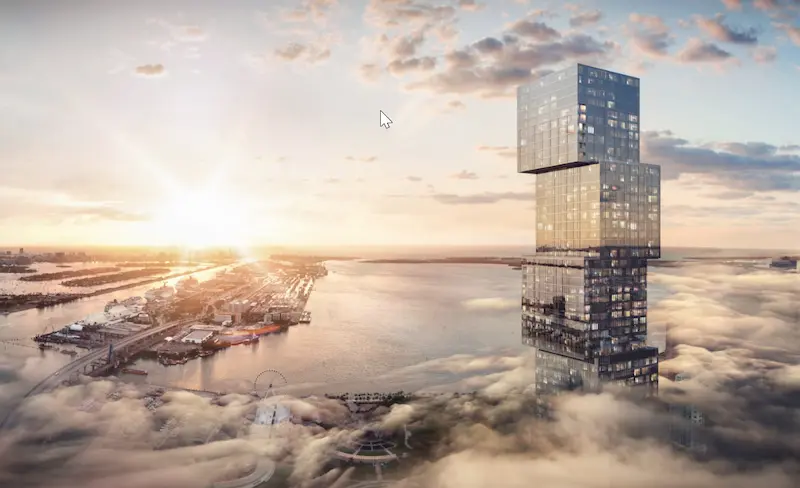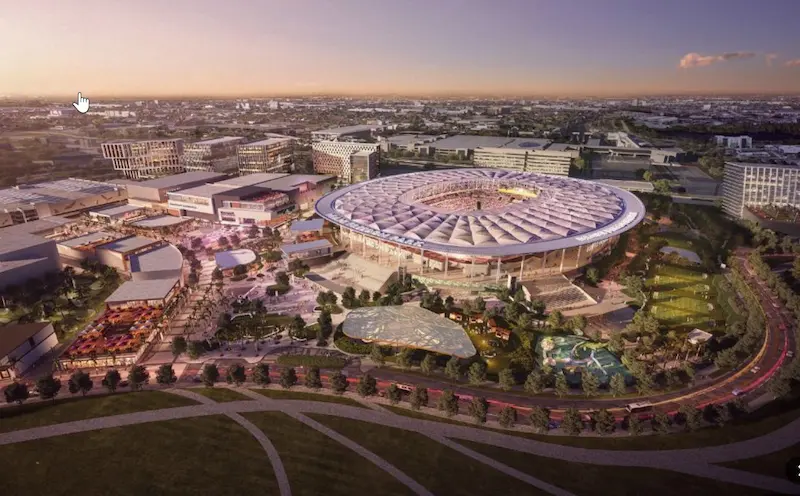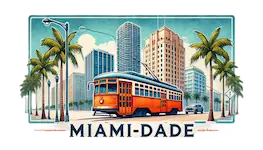|
Getting your Trinity Audio player ready... |
Tabla de Contenido/ Table of Contents
- 1 Living in Miami-Dade: Between the Tropical Dream and Daily Stress
- 2 1. The Sky-High Cost of Living: Surviving, Not Thriving
- 3 2. Traffic and Transportation: A Nightmare on Wheels
- 4 3. Extreme Weather: Heat, Hurricanes, and Anxiety
- 5 4. Social Pressure and Competitiveness
- 6 5. Economic Inequality: Two Worlds in One County
- 7 6. Mental Health: A Silent Crisis
- 8 A Master Plan to Create a “Tropical Dubai”
- 9 7. The Master Plan: A Tropical Dubai or a Mirage?
- 10 8. The Progress Paradox: Opportunities vs. Exclusion
- 11 Conclusion: A Sustainable Future or an Artificial Paradise?
Living in Miami-Dade: Between the Tropical Dream and Daily Stress
A Master Plan: A “Tropical Dubai” for a Few or a “Paradise” for Many?
Miami-Dade County, with its turquoise beaches, vibrant nightlife, and rich cultural diversity, is a magnet for tourists and new residents. However, behind the paradise-like allure, a complex reality exists: for many, living here is overwhelmingly stressful. From the high cost of living to chaotic traffic, daily challenges test the resilience of its residents.
1. The Sky-High Cost of Living: Surviving, Not Thriving
Miami-Dade is one of the most expensive areas in Florida. According to 2023 data, the cost of living is 21% higher than the national average, with housing costs being the main culprit. A two-bedroom apartment can exceed $3,000 per month in areas like Brickell or Coconut Grove, while wages fail to keep up. Many are forced to share housing or work multiple jobs to stay afloat.
Additionally, mandatory home insurance—due to hurricane risks—and high energy bills in the summer worsen the financial burden.
2. Traffic and Transportation: A Nightmare on Wheels
With a road infrastructure that hasn’t kept pace with the growing population, Miami-Dade suffers from chronic traffic congestion. The I-95, Palmetto Expressway, and Calle Ocho are synonymous with morning stress.
Public transportation is limited and unreliable, forcing residents to depend on cars even for short distances. According to an INRIX study, drivers lose over 100 hours per year in traffic jams, affecting productivity and mental health.
3. Extreme Weather: Heat, Hurricanes, and Anxiety
The tropical climate means scorching summers with heat indexes over 100°F (38°C), making outdoor activities difficult and air conditioning costs soar.
Additionally, hurricane season (June-November) brings constant anxiety. The annual preparation—buying supplies, securing windows, evacuating—is exhausting. Events like Hurricane Andrew (1992) and Hurricane Ian (2022) left collective trauma and fear of future disasters.
4. Social Pressure and Competitiveness
Miami is a city of appearances. The culture of luxury and image obsession—driven by social media and Latino & Anglo influences—creates constant pressure.
From luxury cars to designer clothing, many feel the need to maintain an unrealistic standard, even if it means going into debt. Additionally, the job market in real estate, tourism, and entertainment is fiercely competitive, fueling economic insecurity.
5. Economic Inequality: Two Worlds in One County
Miami-Dade is a land of contrasts. While some live in mansions on Star Island or Key Biscayne, others struggle to pay rent in areas like Little Haiti or Homestead.
According to the Census, 20% of the population lives below the poverty line. This gap is reflected in unequal access to education, healthcare, and opportunities, worsening social tensions and the sense of injustice.
6. Mental Health: A Silent Crisis
Chronic stress takes a toll on mental health. Local surveys show that 40% of residents report anxiety or depression linked to work, finances, or social isolation.
Despite available resources, cultural stigma—especially in Latino communities—and lack of affordable health insurance prevent many from seeking help.
A Fragile Balance
Living in Miami-Dade is not for the faint-hearted. Residents navigate daily between natural beauty and practical challenges that erode their well-being.
However, many choose to stay, driven by cultural connections, unique economic opportunities, or love for the city’s energy.
As one Kendall resident puts it:
“You have to learn to surf the waves of chaos without drowning in the process.”
Miami-Dade remains a dream, but one that comes at a high price—resilience, adaptation, and, above all, patience.
A Master Plan to Create a “Tropical Dubai”
While daily challenges test Miami-Dade residents, county officials are pushing an ambitious “Master Plan” to transform the region into a “Tropical Dubai”—a vision that sparks both hope and skepticism.
7. The Master Plan: A Tropical Dubai or a Mirage?
In recent years, county leaders have promoted a bold strategy: turning Miami-Dade into a global hub of luxury, innovation, and elite tourism, inspired by Dubai.
This plan includes mega infrastructure projects, futuristic skyscrapers, and an economy based on cryptocurrencies, technology, and exclusive real estate.
However, critics argue that this vision may worsen inequality and exacerbate existing problems.


a. Mega Investments and Skyscrapers
Miami’s skyline is already dominated by projects like:
- “Waldorf Astoria Residences“ (the tallest building in the southern U.S.)
- “The Miami Freedom Park” – a $1 billion complex featuring a stadium, hotels, and commercial spaces.
Additionally, the county is pushing for:
- The expansion of Brightline (high-speed rail connecting Miami to Orlando).
- The modernization of the Port of Miami to attract ultra-luxury cruises and yachts.
b. Miami as a “Crypto Capital” and Tech Hub
Officials are actively courting blockchain and cryptocurrency companies, offering tax incentives and hosting events like “Miami Bitcoin Week”.
Mayor Francis Suarez even proposed accepting Bitcoin for tax payments.
Meanwhile, the “Miami Innovation District“ aims to become a tech startup hub focusing on AI and blockchain.
c. Elite Tourism and Exclusivity
The plan envisions Brickell and Edgewater as VIP districts, featuring:
- Exclusive memberships.
- Michelin-starred restaurants.
- Private clubs.
Projects like “Six Senses Residences” (apartments starting at $20 million) reflect this trend.
However, this contrasts with the lack of affordable housing for essential workers.
d. Criticisms and Concerns
- Accelerated Gentrification – Neighborhoods like Little Havana and Allapattah are seeing mass displacements due to rising rents.
- Insufficient Infrastructure – Traffic congestion and public transportation issues remain unresolved despite the mega projects.
- Ignoring Climate Risks – Building oceanfront high-rises in a hurricane-prone region seems, to many, reckless.
- Who Is This Dream For? – “They want a Dubai, but Dubai doesn’t have 20% of its population in poverty,” warns community activist.
8. The Progress Paradox: Opportunities vs. Exclusion
Supporters argue that Miami-Dade will become a “city of the future,” attracting high-tech jobs and foreign investment.
However, middle-class and working-class residents fear being left behind:
- Wages vs. Costs – Jobs in hospitality and services still pay less than $15/hour, not enough to survive in the “new Miami.”
- Luxury Facade, Deep Issues – Underfunded public schools, overwhelmed hospitals, and flooded streets persist while tourist zones get priority.
- Cultural Identity at Risk – Miami’s Caribbean, Latino, and American identity could be diluted in favor of a globalized, elite image.
Conclusion: A Sustainable Future or an Artificial Paradise?
The dream of turning Miami-Dade into a “Tropical Dubai” reflects ambition, but without policies to protect vulnerable residents, invest in climate-resilient infrastructure, and ensure affordable housing, the project may collapse under its own weight.
“Dubai was built in a desert; Miami is on the frontlines of climate change. Copying its model without adapting to our reality is like playing with fire in the middle of a hurricane.”
Miami-Dade remains on the edge, caught between its potential as a global innovation hub and the risk of deepening the struggles that already make life here stressful.
Want more post like this?
Head over to our homepage for the latest updates from South Florida and beyond:








